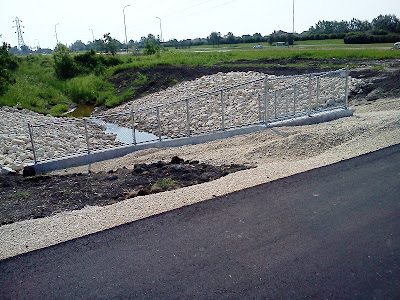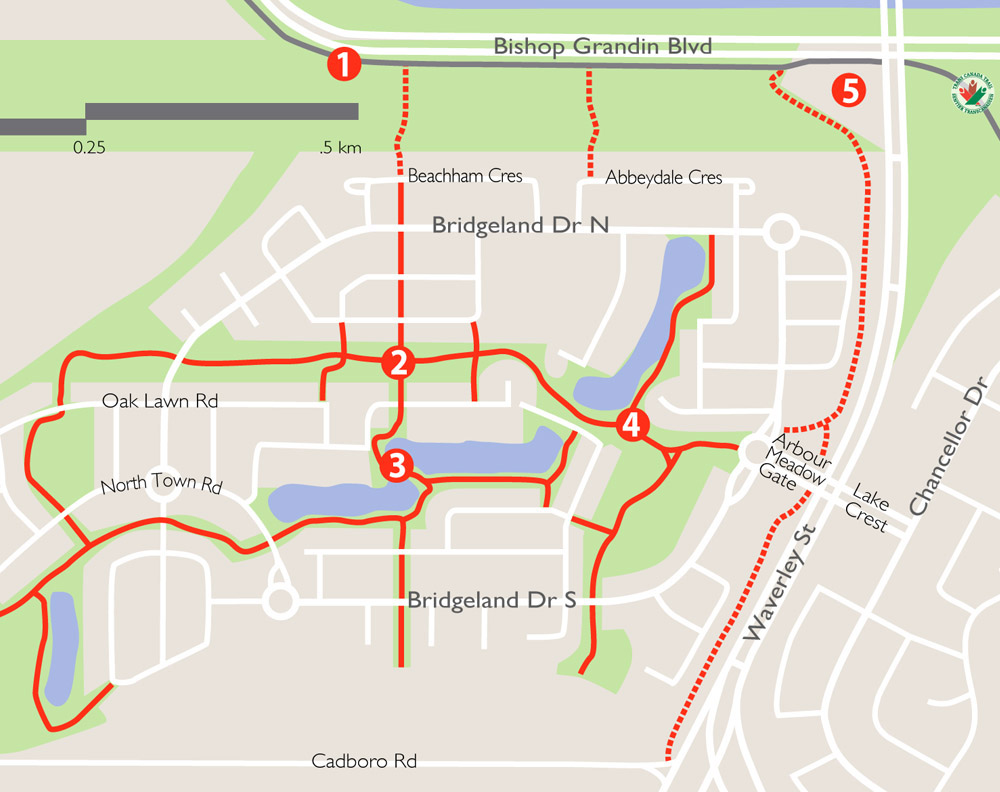So I was driving recently on the freeway in Saskatoon and ... oh wait ... maybe I should explain for those of you who have never driven in a city besides Winnipeg: a "freeway" is a road with no stoplights where you can drive at highway speeds. Saskatoon, a city one third the population of Winnipeg, has one. It's called Circle Drive.
As I was saying ... I was driving on Circle Drive in Saskatoon when I approached a construction project to extend the freeway to the west. That's when I saw it: a sign that said "ZIPPER MERGE AHEAD".
| source: http://ckom.com/story/circle-drive-millar-back-normal/110318 |
I quite like it.
It's a nice alternative to the situation that we normally encounter here in Winnipeg. That is, the majority of drivers all pile into the single lane that is continuing, causing a huge backup in traffic. Then a minority of drivers zip ahead and cut in at the front of the line or somewhere close to it.
There are a couple of problems with this, one being that it creates an unnecessarily long traffic queue, another being that it causes animosity among drivers. The drivers who get in line right at the start of the queue and wait patiently as the line trudges along resent the selfish nimrods who zip past them in the empty lane and cut in at the front.
But why should you get in line half a mile before the construction starts when there is a perfectly good lane that can legally take you right up to the merge zone? That isn't rational.
I've been on both sides. Sometimes I get in line, and when I do I get annoyed at those who don't. Depending on what kind of mood I'm in that day, I may even do my best to keep them from merging in front of me. Sometimes, if I'm in an unusually pissy mood, or if the guy trying to merge is driving a pickup truck with a license plate that says "GORJUS" and is wearing a ball cap backwards (I have seen this), I'll even tease them by leaving space for him to merge and then closing up to the car in front of me at the last second, and then I'll go extra slow to give the guy behind me a chance to close up behind me too.
That's how I roll.
However, sometimes I'm the douche bag who zips up the empty lane, although in my head I say to myself "Oops, is this lane closing off? Gosh, I hadn't noticed. I guess I ought to merge over here at some point." -- as if I can telepathically communicate to the drivers waiting in the queue that I didn't mean to drive up the empty lane, it's just that I didn't notice the construction signs. Silly me.
However, I won't drive right to the front of the line because that would be rude, and it would negate the little excuse that I made for myself that I only inadvertently failed to get in line.
This is all normal behaviour, right? Good. Just checking.
Sometimes those who set up the construction sites make it worse than it needs to be. For example, the signage for the construction on the Pembina overpass on the south Perimeter Highway in Winnipeg begins more than 2 kilometers in advance of the lane closure, with signs that warn you that there is a lane closure ahead and the speed limit is reducing to 70 km/h. As a result, most drivers pull over into the right hand lane and slow down to 70 km/h on the highway so far in advance of the construction that you can't even see where the construction begins.
*****
In writing this blog post, I found out that the zipper merge is a new thing for Saskatoon. They only started to experiment with it in May, because, as one person put it, "People have been so bad historically in this city anyway on road construction and merging that anything might improve it".
Saskatoon borrowed the idea from the state of Minnesota, a pioneer in the zipper merge revolution, and so far they have found that it works quite well. My own experience with it was pretty good. I mean, about as good as merging at a road construction site can be. It's not comparable to, say, a full-body hot oil massage, but you know ... it wasn't painful.
The Minnesota Department of Transportation says that the zipper merge "has proven to help traffic flow by decreasing queue lengths as much as 35 percent" and "reduced lane-changing conflicts and sudden-stop crashes."
However, even in Minnesota not everyone is an advocate. One blogger: "I get how the zipper merge is supposed to work, the problem is the people who don’t. ... The zipper merge is going to be this century’s conversion to the metric system in the ’70s. Great idea, made perfect sense, and was dead on arrival."
Much like a roundabout, I don't know how you could fail to understand how it works. Having never experienced such a thing before, I found it exceedingly easy to understand. Mind you, I have underestimated the stupidity of other drivers before.
Even if some people don't catch on to the concept of a zipper, I think it's worth trying out here in Winnipeg because it eliminates the dilemma of deciding between two bad options: burn 5 minutes of your life in a line of cars, or be rude and selfish by cruising to the front of the queue.
Taking turns is something we're taught to do as little kids. As adults driving cars it shouldn't be that hard.








